Course + Curriculum
Engineering for US All (e4usa™) courses empower, engage, and excite students to use what they know and find what they are passionate about to take control and boldly influence the world.
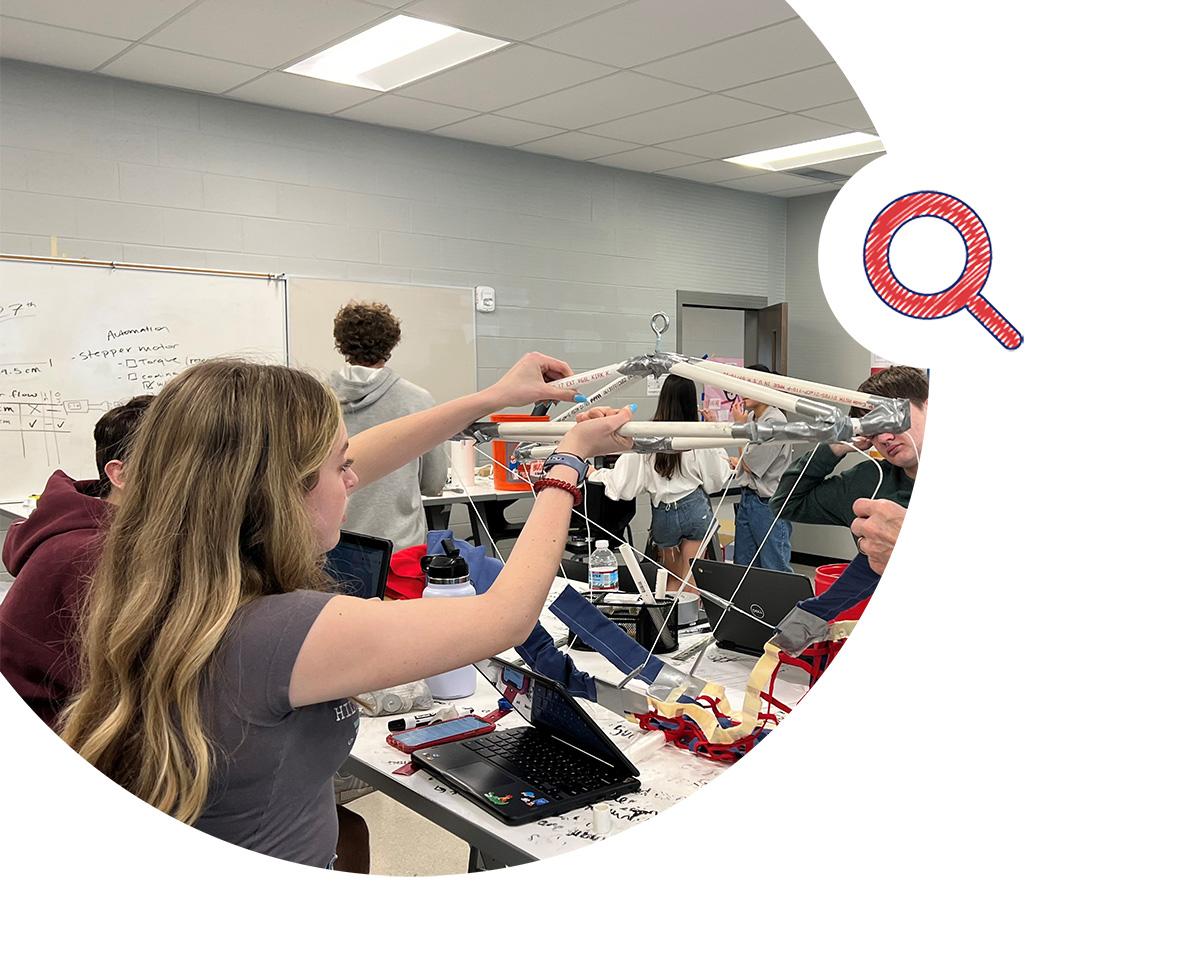
Connect with Engineering
Students will connect with engineering by learning the “why” and “how” of engineering; exploring engineering as a noun and a verb, and building confidence in their understanding of engineering concepts. e4usa is an onramp for students to learn about engineering as a profession and a personal practice and increases student confidence to use engineering tools and thinking. Students will practice three systematic continuous improvement practices: consistent critical self-reflection, ethical action, and seeking feedback (e.g. performance data, mentoring, etc.). In the courses, students will examine historical and current engineers and trace their professional origins, while having the opportunity to earn industry-recognized credentials and college credit to help prepare them for success as problem solvers in the workforce.
Download e4usa + Making Curriculum guide
Download e4usa + Programming Curriculum guide
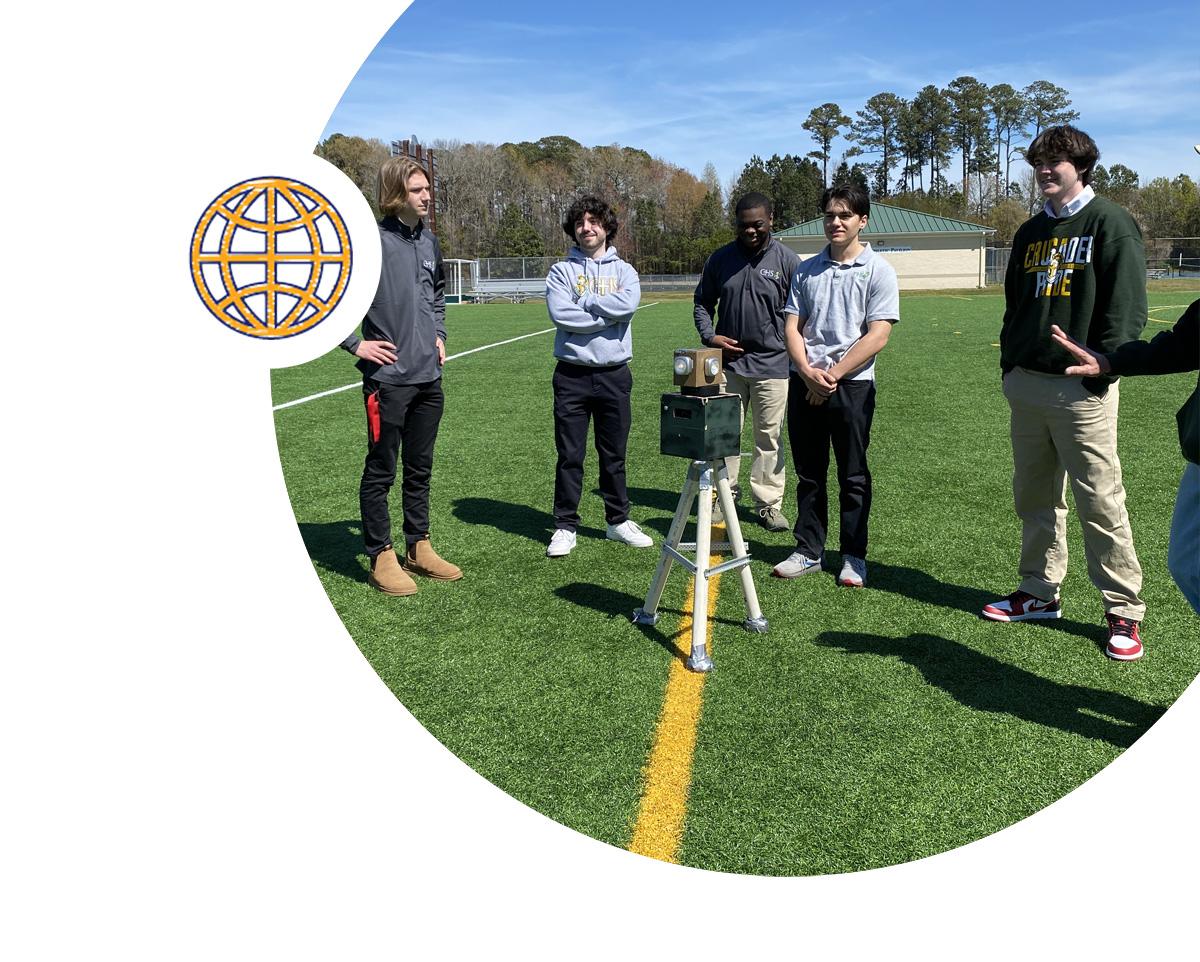
Engage like Engineers
These courses will explore the interplay among society’s need for engineering, the intentions of engineers, and the positive and negative impacts of engineering. In multidisciplinary teams and individually, students will explore and embody various expert roles including both humanities and STEM-field experts as they grapple with humanity’s grand challenges. Students will grow an appreciation for how shifting scales (e.g. local, regional, global) change the potential impact on society with attention paid to ethical implications.
Unit Guides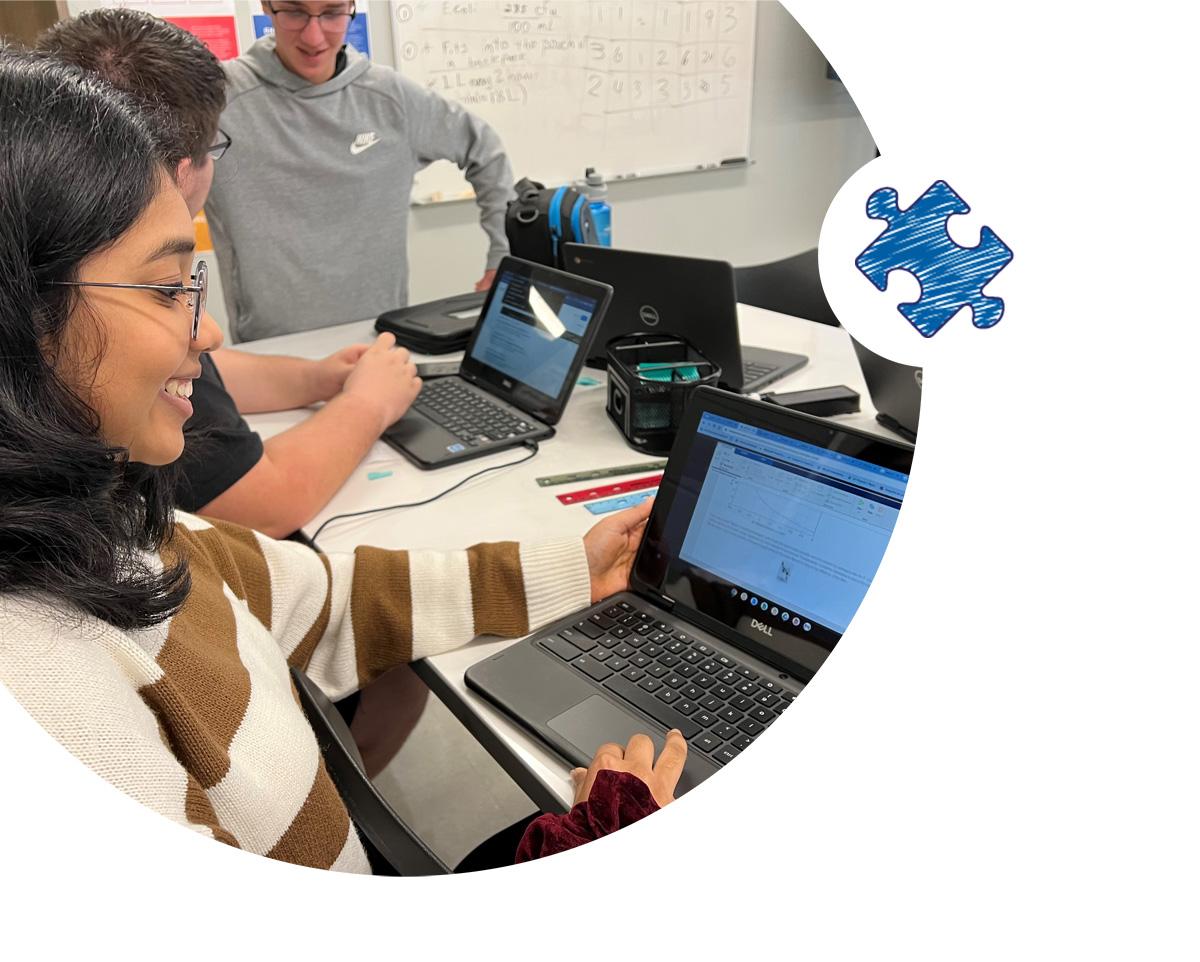
Design Portfolio
Engineering design as a process, or design within constraint, is scaffolded in terms of a learning progression that can be practiced in any discipline. Students who complete these courses will have had opportunities to create and iterate in at least 4 ways to contribute to their design portfolio.
- Teacher-led design experiences (e.g. Water Filter, Shoe Tread, Robot Mover, etc.)
- Self-directed ‘local product’ launch and a high school design-a-thon.
- A solution to a global problem that is applicable in the students’ local context.
- A personal project or a solution addressing the needs of a classmate or external client.
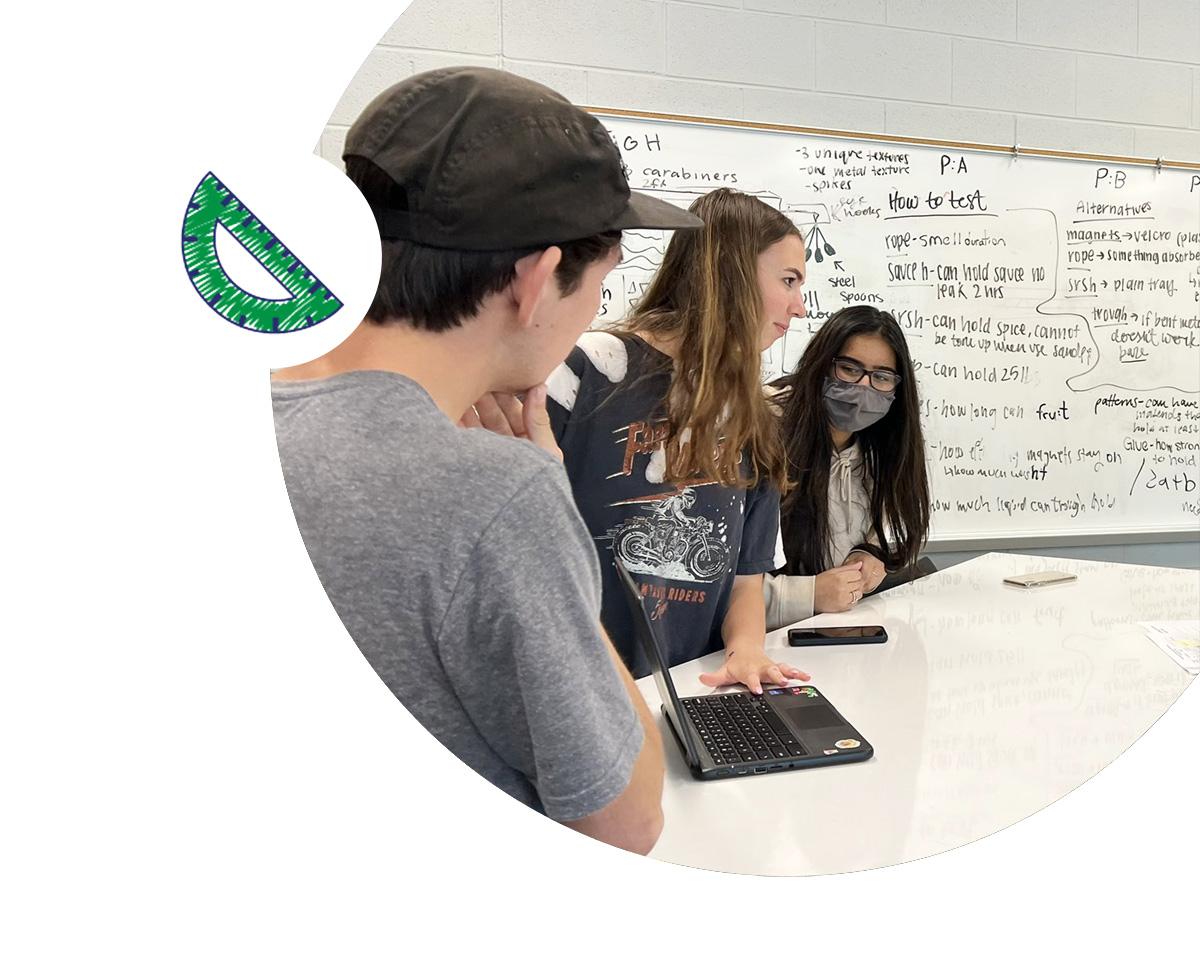
Engineering Design Practices
Design is the cornerstone of engineering, and students will explore engineering design as a means to solve real-world problems. Students will develop personal problem-solving agency by practicing a systematized method of engineering design that builds autonomy and mastery. Students will troubleshoot and optimize in contexts of increasing ambiguity and complexity. Students will practice negotiating tradeoffs in design and valuing the input of multiple disciplinary expertise. Communication of results will occur in a school-wide ‘innovation showcase’ and in documentation through a digital design portfolio shared with the entire e4usa community.
ITEEA ALIGNMENT NGSS ALIGNMENT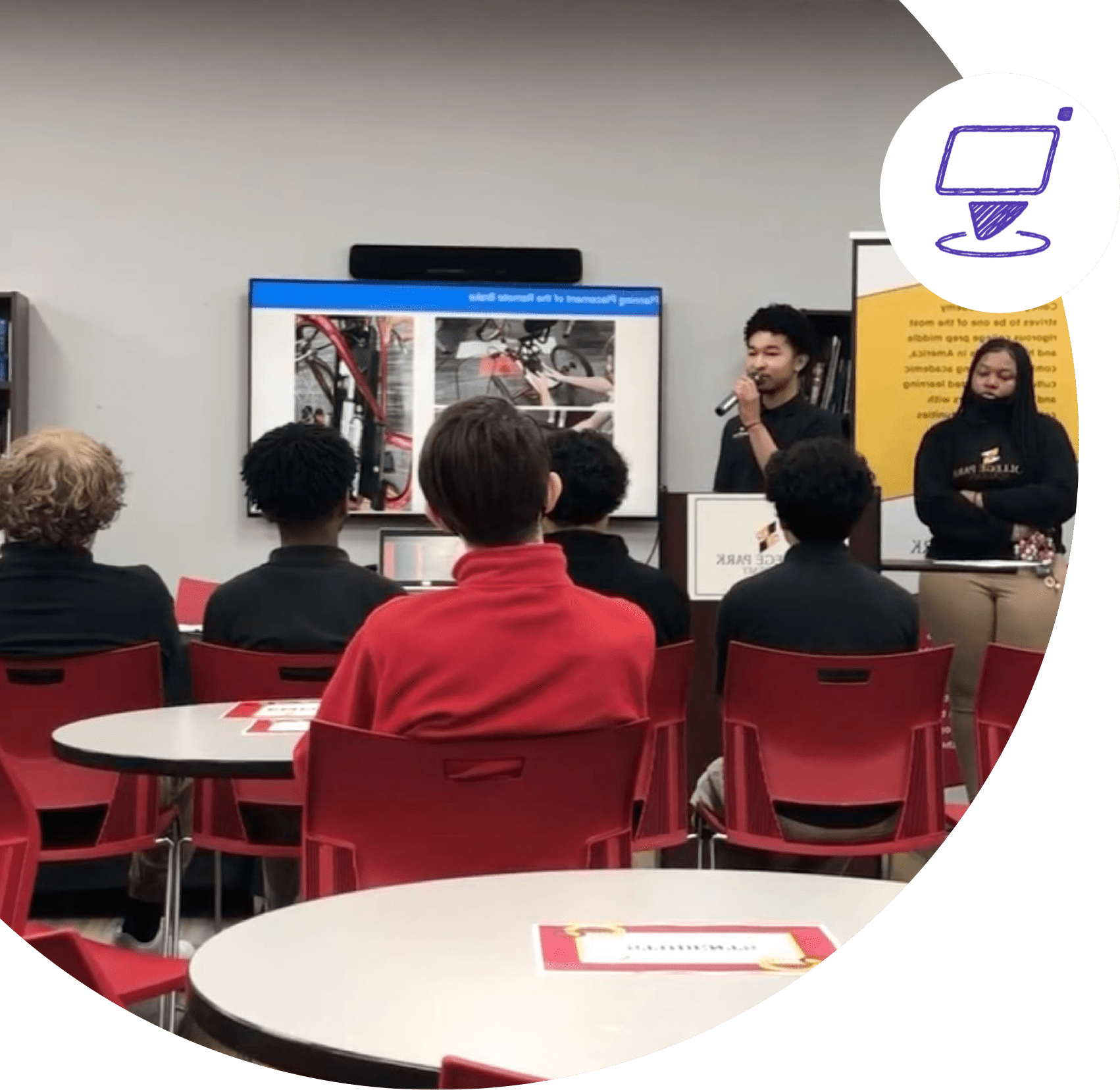
Industry Recognized Credentials
At e4usa, we believe students should graduate high school with both a strong understanding of engineering principles and credentials that demonstrate their skills. Our curriculum prepares students to earn industry-recognized certifications, such as computational thinking with MATLAB and technical drawing and 3D spatial reasoning with CAD, awarded by leading organizations and recognized by employers, colleges, and universities. These credentials give students a competitive edge, showing they have mastered essential engineering skills and are ready to take on real-world challenges.
MathWorks Certification Program
Each unit covers our four signature course threads to help students achieve the following learning outcomes. Every e4usa course covers these learning objectives, with individual courses adding content specific objectives such as CAD or Programming in a Purple thread.
Red Thread: Connect with Engineering | ||
Yellow Thread: Engineering in Society | ||
Blue Thread: Engineering Professional Skills | ||
Green Thread: Engineering Design | ||
Purple Thread: Engineering Connection | ||
e4usa + Making Curriculum
Introducing Engineering
Engineering is Everywhere
Students will explore engineering through the evolution of engineering products. They will define engineering by relating it to their future plans and engaging in multiple challenges. Students will begin to build their engineering identity.
Engineering is Creative
Students move from "group work" to "teamwork". the students then engage in a guided engineering challenge(s) tethered to a global issue in which they are provided a related problem and design, and then construct and test and evaluate product(s) to address a need. This challenge is water filtration.
Applying Engineering: Generating a solution to a local problem
Engineering is Human-Centered
Teams of 3-4 students will select a local problem to research, sketch, and then prototype a solution. This will be an in-depth investigation into “What is the real problem” as well as stakeholder analysis. The goal is to understand the real problem, creatively construct a low-cost functional prototype and compare to existing solutions as students refine, iterate, or ‘deliver.’
Engineering is Responsive
Prototypes will be presented at an in-school design-a-thon and to community partners for critical feedback and user input. Design details will be documented in students' engineering design process portfolios.
Engineering is Reflective
Students will reflect on both their engineering design process decisions and work as well as their teamwork in their final project. Students will also take part in a public showcase of their work.
e4usa + Design Curriculum
Applying Engineering: Generating a solution to a global issue
Engineering is Intentional
Teams of 3-4 students will identify a global issue and will identify a local problem that is associated with the global issue identified. The issues and problems selected will be co-constructed by students and teachers and framed with the task of trying to change the world for less than $1,000. Student teams will present a design brief to external evaluators in which they will justify their conceptual design concepts and project management plan for the chosen problem.
Engineering is Iterative
Team of 3-6 students will engage in all aspects of the design process. Students will build, test, and optimize a prototype of the solution designed. As time permits, students will re-design a solution based on what they learned from the testing of their first prototype to refine what they learned through iteration. Student teams will generate a comprehensive engineering design report and will provide a design presentation.
Generating an engineering solution to a problem relevant to you
Engineering is Personal
Students examine their day-to-day lives to find problems that can be tackled by teams of 3-4 students. Students may also solve a problem provided by a local community partner that is of personal interest to them. The process leading to a design solution is student-driven, teacher-guided, and highly informed by the prior experiences in the course. This is open ended co-creation.
Engineering is Reflective
Students will reflect on both their engineering design process decisions and work as well as their teamwork in their final project. Students will also take part in a public showcase of their work.
e4usa + Programming Curriculum
Introduction to Computer Science and MATLAB
Students will explore computing using MATLAB, and its use as in manipulating and exploring
data. Basic and more advanced MATLAB will be explored.
Data
Students will explore the structure and nature of data, including number systems, and the use of MATLAB for data analysis.
Algorithm and Programming
Students will develop algorithms and implement algorithms with MATLAB. Students will use MATLAB in problem solving.
Computer Systems and Networks
Students will explore networking basics, the Internet, fault tolerance, and parallel and distributed computing.
Impacts of Computing
Computational thinking and problem-solving using computing are featured. Students will also explore the societal and ethical considerations of the use of computers and computing more deeply. Collaborative computing, privacy and security, and historical examples will be featured.